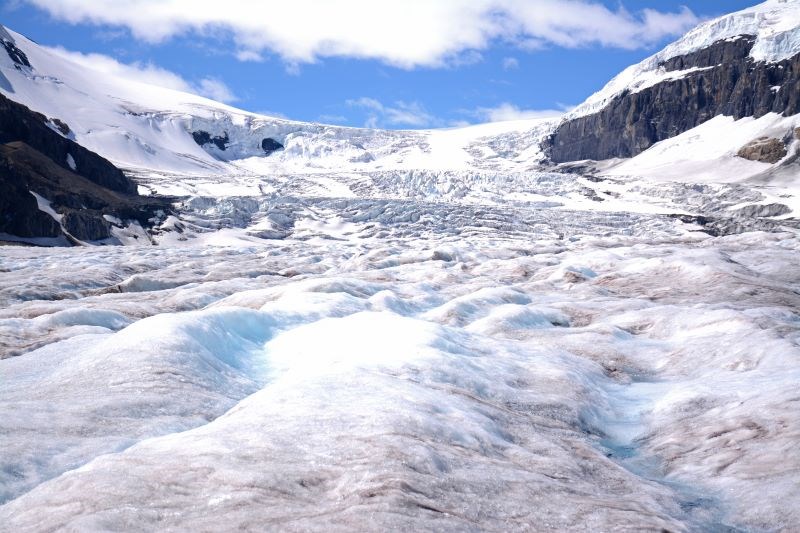
Peter Shokeir | [email protected]
Exposure to wildfire smoke can cause glaciers to melt faster, according to a new study by University of Saskatchewan (USask) hydrology researchers.
From 2015-2020, researchers observed each melting season at the Athabasca Glacier, part of the Columbia Icefield in Jasper National Park.
“We wanted to understand the link between forest fire smoke and glacier melt, because living in Western Canada, we are experiencing quite heavy wildfire smoke,” said Caroline Aubry-Wake, lead author of the study and a PhD candidate in USask’s College of Arts and Science who lives in Canmore, Alta.
Two automated weather stations recorded the darkness or brightness of the glacier’s surface, or the energy reflected off the surface, also known as albedo.
Researchers also recorded air temperature, precipitation, wind speed, humidity, snow depth and ice elevation.
In years with more wildfire activity, smoke left ash and soot that made the glacier ice darker, which increased the melt.
While smoke does obscure the sun, it only partially mitigates the melting as that amount of smoke was only in the air a couple of times a year, while the ash and soot could remain on the glacier for many years.
“Even in years where there is no wildfire activity—so there’s no smoke in the atmosphere blocking any sunlight—you still have that darker surface that increases melt,” Aubry-Wake said.
“You have increased melt, so you have more water coming off the glacier, which means that there’s more water in the rivers below currently, but that also means that the glaciers are retreating faster than we thought,” Aubry-Wake said.
“So, we need to address predictions of glacier retreat to include (how) these new wildfires increase melt."
A satellite imagery analysis also determined most of the dark areas were occurring at the exposed toe of the glacier as opposed to higher where it was all snow covered.
The study ultimately reveals how climate change is impacting glaciers not just through rising temperatures but by also causing more severe and frequent wildfires.
“We often think of mountains as being kind of this pristine, remote environment that is just, like, disconnected from the world, beautiful white peaks with no human influence, but then you realize that, yeah, they are impacted by climate change,” Aubry-Wake said.
She added that the findings were generally applicable to other glaciers, since the processes remained the same regardless of location, although the specific numbers would be different.
Aubry-Wake authored “Fire and Ice: The Impact of Wildfire-Affected Albedo and Irradiance on Glacier Melt” (April 2022) in collaboration with fellow PhD candidate Andre Bertoncini and supervisor Dr. John Pomeroy.



